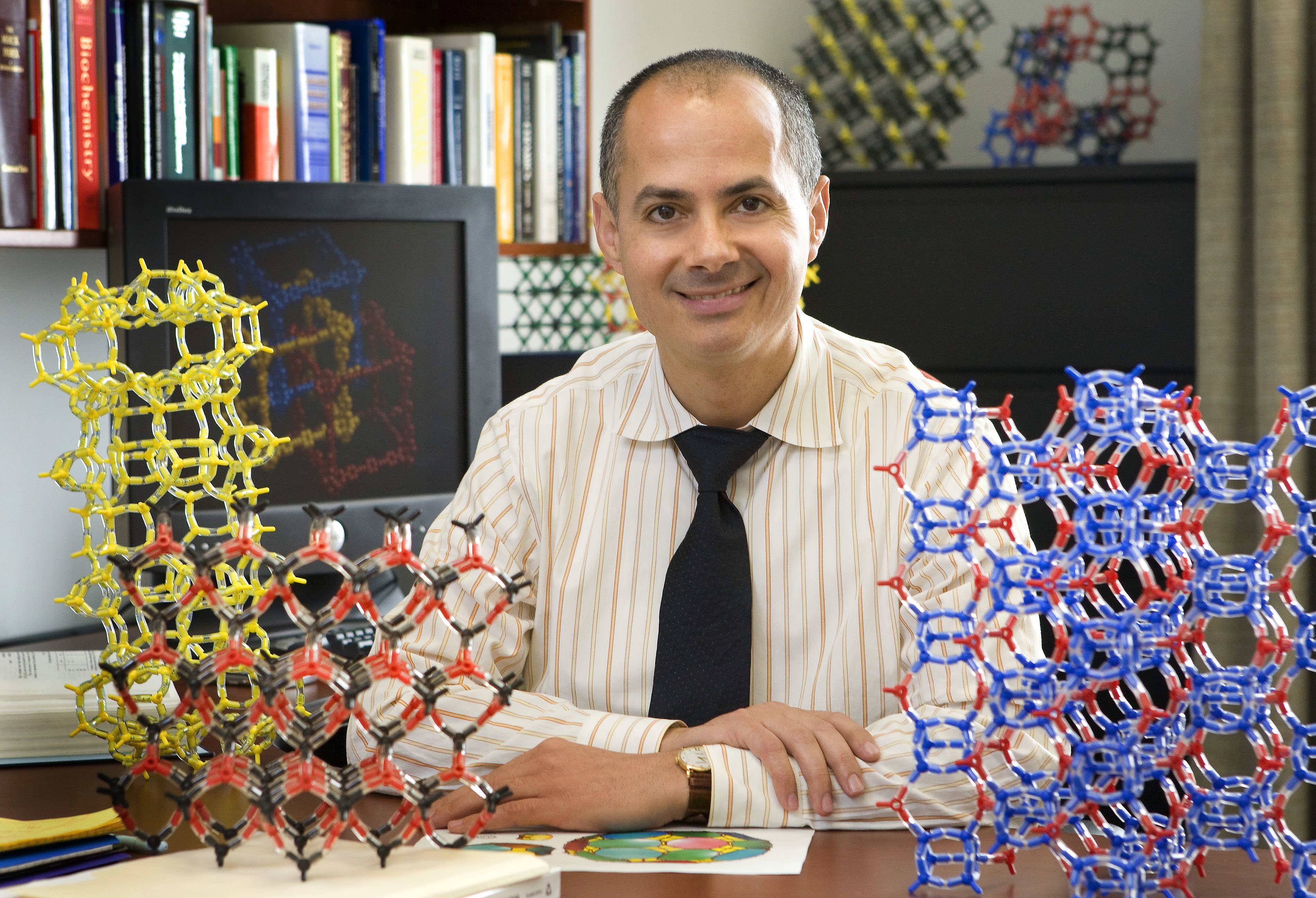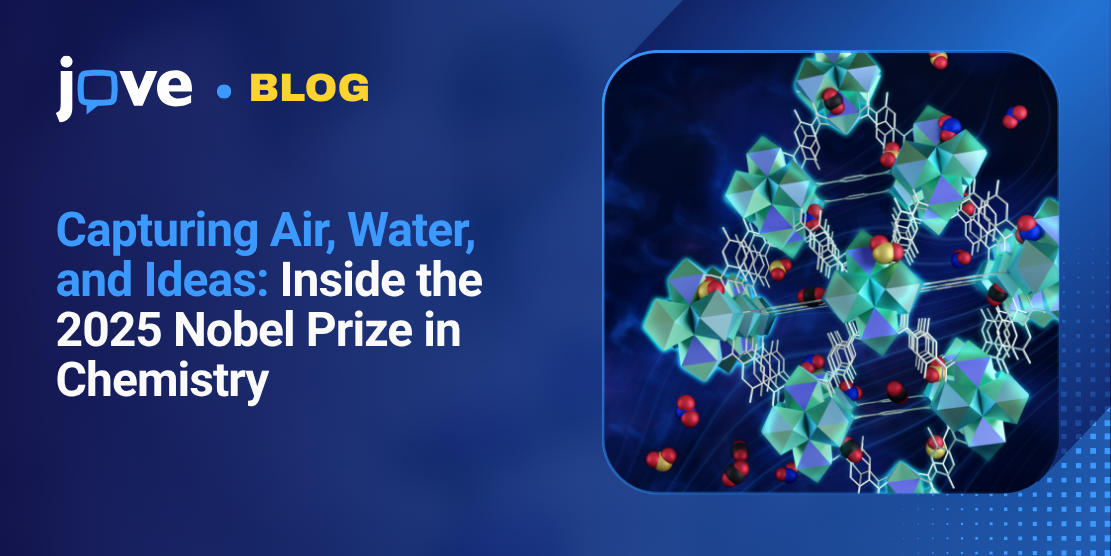When the 2025 Nobel Prize in Chemistry was announced, it honored more than a scientific breakthrough. It celebrated a shift in how chemists imagine and build the materials of the future.
This year’s prize went to Susumu Kitagawa, Richard Robson, and Omar M. Yaghi for the development of metal–organic frameworks (MOFs), crystals that can capture, store, and transform gases like hydrogen, carbon dioxide, and water vapor.
MOFs look like ordinary powders, but under the microscope, they reveal a precise 3D network of metal ions and organic linkers. These tiny frameworks create huge internal surfaces where gases can attach and react. The result: materials that can filter air, store clean energy, and even pull drinking water from dry desert air.
As Prof. Yaghi explained in his Nobel interview, “the deeper you dig, the more beautifully you find things are constructed,” a reflection of how chemistry has evolved into a science of design, where researchers build materials for a purpose rather than finding them by chance.1
Collaborative and Cumulative Discovery
The Nobel-winning story spans decades of shared progress.
In the 1980s, Richard Robson created the first network-like compounds that linked metals with organic molecules. Later, Susumu Kitagawa showed that these materials could be porous and reusable, letting molecules in and out. Building on this foundation, Omar M. Yaghi developed reticular chemistry, a method for linking metal ions and organic molecules into strong, regular frameworks.2
Before this, chemists struggled to control how crystals formed. Small changes in a reaction could lead to unpredictable results. Reticular design changed that. By designing the building blocks in advance, Prof. Yaghi and his colleagues could plan the shape and size of a material, and choose what it could do.

Prof. Yaghi with models of metal–organic frameworks (MOFs) on his desk. © Boasap 2008 CC BY-SA 3.0
Why MOFs Matter
A single gram of MOF can have the surface area of a football field.
This makes them ideal for storing gases, filtering pollutants, and speeding up reactions. Because their pores are uniform, scientists can fine-tune which molecules pass through or stick inside—a level of control crucial for clean-energy applications.
At the University of California, Berkeley, Prof. Yaghi’s group developed a zirconium-based MOF called MOF-801 that collects drinkable water from dry air. The material traps water vapor at night and releases it when warmed by sunlight, a design that inspired real-world devices to produce clean water in arid regions.3
Today, the same design principles behind MOFs guide research in nanotechnology, drug delivery, and catalysis, fields where scientists build materials atom by atom to solve global problems.4
Making Methods Visible
To achieve such progress, scientists need to communicate their methods well. When procedures are described only using text, you can lose vital information: timing, texture, or color changes that indicate progress in a reaction.
Prof. Yaghi, now the 10th JoVE author to be honored with a Nobel Prize, published a JoVE video article demonstrating how to synthesize complex metal–organic compounds step by step. Viewed over 10,000 times, the video lets researchers see each action precisely and repeat the method with confidence in their own labs.
Video methods make science more transparent and reproducible. They turn technical procedures into visual lessons that others can learn from, adapt, and improve.
The JoVE Methods Collection on Metal–Organic Framework Synthesis and Characterization, curated by Prof. Seth Cohen, reflects this same goal, creating a shared library of advanced, expert-demonstrated techniques to chemists worldwide.
A Framework for Future Discovery
The 2025 Nobel Prize in Chemistry celebrates more than a scientific breakthrough; it recognizes a new way of thinking about how materials are designed and shared.
Through patience, teamwork, and the discipline of design, scientists have learned to create space within matter. In doing so, they have helped address some of the world’s most urgent challenges.
Progress in science depends not only on discovery, but on how we share it. As visualization becomes standard in scientific research and education, today’s students may become the next innovators who design new materials for energy, medicine, and sustainability.
Explore visual methods for molecular design with JoVE’s 17,000+ research videos.
Banner image by Oak Ridge National Laboratory / Jill Hemman, U.S. Department of Energy
- Nobel Prize Outreach. (2025). Omar M. Yaghi: First Reactions Interview. https://www.nobelprize.org/prizes/chemistry/2025/yaghi/interview
- The Royal Swedish Academy of Sciences. (2025). Scientific background: The Nobel Prize in Chemistry 2025 – Metal–Organic Frameworks. https://www.nobelprize.org/uploads/2025/10/advanced-chemistryprize2025.pdf
- Hanikel, N., Prévot, M. S., & Yaghi, O. M. (2020). MOF water harvesters: The integration of metal–organic frameworks and devices for atmospheric water harvesting. Nature Nanotechnology, 15(12), 937–944. https://doi.org/10.1038/s41565-020-00810-8
- Furukawa, H., Cordova, K. E., O’Keeffe, M., & Yaghi, O. M. (2013). The chemistry and applications of metal–organic frameworks. Science, 341(6149), 1230444. https://doi.org/10.1126/science.1230444




